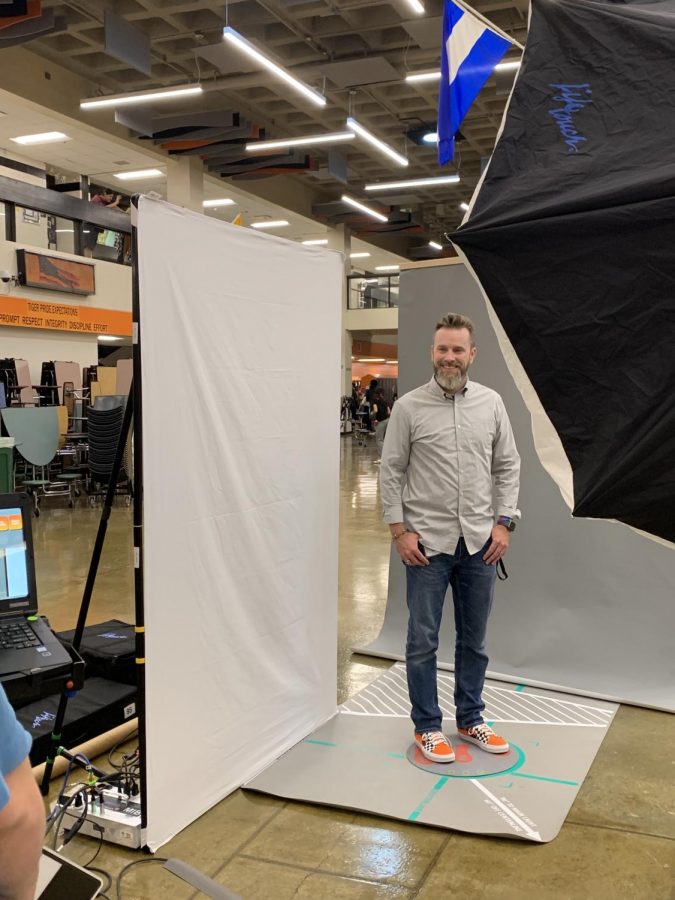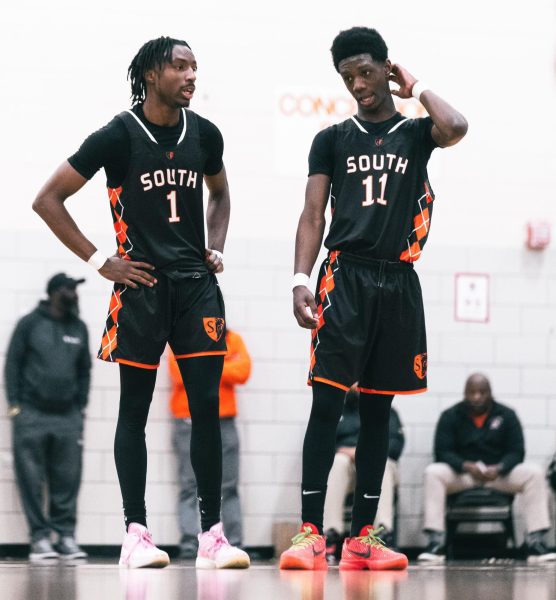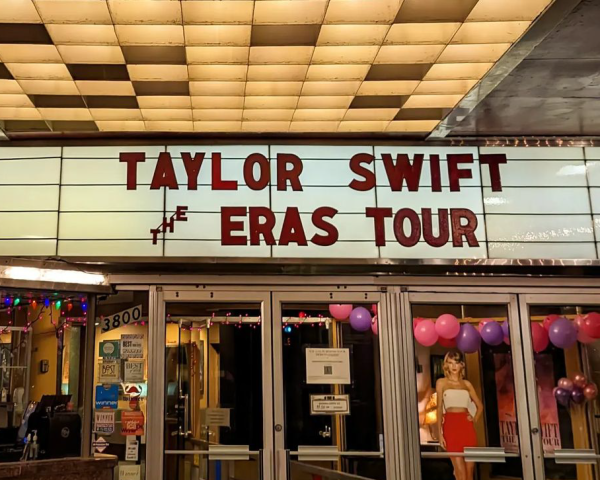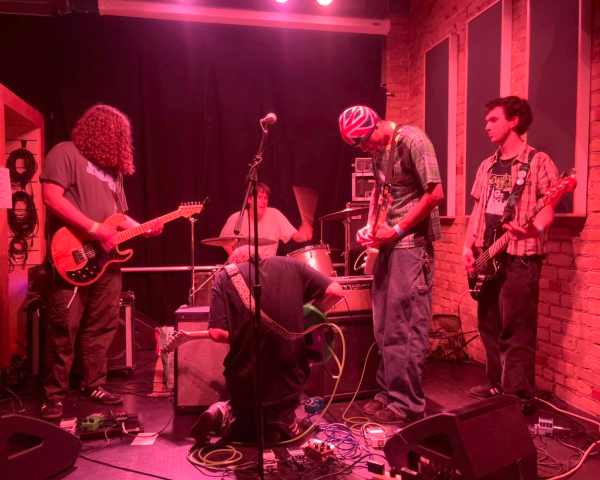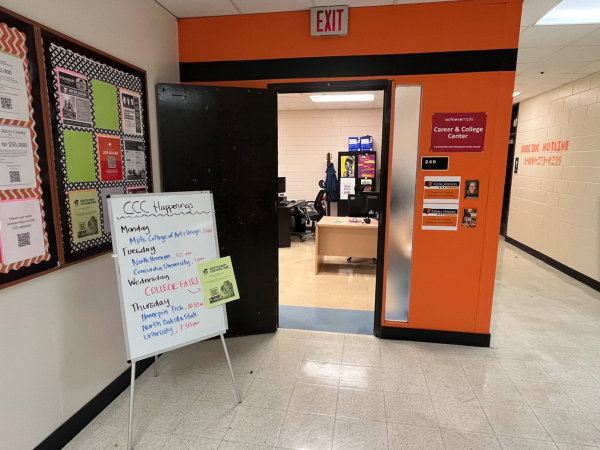Introducing South’s new principal: Brett Stringer
Straight from Colorado, Brett Stringer is ready to start the 2019-20 school year and immerse himself as much as possible within the culture of south and learn from both staff and students. “I think there was a lot of culture work that has been done in the last 4 or 5 years with principal Aponte, and he lead some amazing work and that legacy is really important, that that continues,” said Mr Stringer.
How long have you been a principal?
This will be my 4th year. I was principal at a middle school in Aurora, Colorado North middle school and then I was a principal at Roaring Fork High School in Carbondale, Colorado.
Where did you attend University?
I went to the University of Denver for undergrad. I went to Metro State…in Denver for my teaching license and then University of Colorado for my masters.
What was your major?
I was a film major as an undergraduate, majored in film and minored in English and marketing. Graduate was administrative leadership and policy studies.
Did you originally want to go into film or marketing?
I always made movies in high school. My favorite teacher was the first teacher who said, “You can write a paper or you can do something else.” So we started making movies. So I always liked doing that, and then when I got to college that was an option my freshmen year, and so I started taking those classes, and I started taking marketing classes because I like design and things like that. When I got towards my junior and senior year, I had satisfied all those needs for those degrees and so I kinda just had to do other things and that’s how I got the English minor. I didn’t want to go into film once I got an experience in LA because I am not a cut-throat person and you really, really have to be pretty cut-throat to succeed. I still make [movies] but it has shifted to making movies of my kids, and now it is so easy to make them because you can do it all on your phone.
Did you always know you wanted to go into education or teaching?
No I didn’t. I wasn’t the greatest student. I was an okay student. I figured out the system pretty easy in high school. I figured out what I needed to do to not get noticed and just everyone assume he’s good. So I didn’t get a lot of attention on me, good or bad. By the time I hit my senior year in high school, I had had the same English teacher for 3 years. I had turned in a Huckleberry Finn essay, the same essay 3 years in a row, never changed it and got a better grade every year. That wasn’t okay, That’s not okay for anyone to do, but I knew I could do it, so I did it. So when I graduated college, my wife and I started having that conversation, what are our next steps? My wife was an art major, and we thought it would be awesome if we taught and taught together, and we both immediately went into teaching programs. Once I started getting into it, I absolutely loved it.
How long were you a teacher?
I was a teacher for 7 years, I taught English, English as a second language, and then they gave me a film class which was awesome. The last 2 years of teaching, I was teaching part-time and an instructional coach half-time. So I was in the classroom then out of the classroom, in other people’s classrooms, supporting teachers. Then I moved into a dean of instruction. I didn’t have a classroom and I wasn’t an assistant principal, but I was in charge of the training the teachers would get for the year, for their development.
Why South?
So my first teaching job was at Denver South. Denver South is very, very, very similar to Minneapolis South. Denver South is where I started teaching. It was the second language magnet for the city of Denver for students who spoke a second language other than Spanish. I think we had over 40 different languages spoken in our school and a variety of experiences.
We had a newcomer center for students who are new to the country and that’s where I taught, right when students were new to the county and they were just learning English as their fourth or fifth language. My first classroom was 21 kids and 11 different languages, none of that being English. So we had Russian, we had Somali, we had Arabic.
I was there for 7 years, and I considered and always consider Denver South to be home. It was the greatest environment. It was a school that said, “Diversity is our strength, and this is what it’s going to look like,” and we were unapologetic about it. Every school after that, I held Denver South as this benchmark of this is what it should be. The middle school I was an assistant principal at was the exact same model that fed into [Denver] South, I spent 11 years in an environment like that.
My wife is from here and she decided her father lives here and she is an only child and he is getting a little older, and so we decided we were going to move back to Minnesota. So once we made that decision I starting looking around at what was available. I knew I wanted to be in an urban setting and I knew I wanted to be in Minneapolis Public Schools.
There were 2 options in that point, South and Southwest. The more I did my research, it wasn’t like ‘oh this is a job that’s open that I think I can get.’ The more I did the research, I really wanted to be a part of this school. It felt like home without actually being in it because it just felt so familiar around my experience, and so I did everything I could to get in the doors.
How do you plan on connecting with students?
A variety of different ways. My relationships and student leadership are extremely important to me, which is another reason that makes South jump out at me. One thing that we are going to do is put together a student advisory board or a principal advisory board. That will be an opportunity for leaders in different organizations, clubs, groups within the school to meet, maybe twice a month and discuss what’s going on around the school and directions we can go. I would like that leadership group to be very much the voice of everybody else within the school, having as much representation around the table as possible so we can have that opportunity for student voice.
Other than that I think it is just being extremely visible and present and connecting with students. Last night I went to the volleyball game and I didn’t know anybody. I think people recognize my face but at this point, they don’t know who I am. So I sat in the middle of the stands, rather than stand down below, and finally someone was like are you…? And then great conversations started around me, so it’s just being present and sitting with students. Being as open as possible.
I think what people will learn is that I am very approachable. This summer, Jordan and Ashlyn and Nancy hosted an event at Squirrel Haus [Gallery], and there were a couple of other student-hosted events, and that was another opportunity to meet with people. Jordan and Ashlyn blew me away; They are awesome. So we got a chance to talk about “What do you love about South, and what are some things that we can do better?” That is where the principal advisory conversation started.
[The advisory board will be] all students and then me, but I don’t consider myself the leader of that group. I will be more of the facilitator. We are all here together and we will create a protocol and process to make sure everybody’s voices are heard.
So something we are working on this year is our norms of collaboration. What does that look like, to make sure the voices are heard? I think initially let’s learn from each other. There are a couple of things I’m interested in hearing student voice on, particularly around cell phones.
What do you hope to accomplish at South?
I think the short term goal is to immerse myself as much as possible within the culture of South and learn, learn from our students and learn from our staff, not make any assumptions. I think there was a lot of culture work that has been done in the last 4 or 5 years with Principal Aponte, and that legacy is really important, that that continues. I want to get into the classrooms and see what experience students are having within their classrooms and so that’s another learning for me, how is content being delivered to our students and how can I support students and teachers understanding the best possible ways to deliver and also understand that content?
What are you most excited about?
June 28th was my first day in this office and so the month of July was good because it gave me a chance to get to know things a little better because I was really the only one here and that gets lonely after a while. I got lost once on the second floor, and I didn’t have a tour guide. As we got closer to August I started getting really excited for the leadership team, coming back as we get closer to last week, the teachers coming back, we just spent 3 straight days doing professional development, telling our stories, me telling my story. Having all our teachers back in the building is really exciting, and then meeting the ambassadors, having students start to come in because of sports happening and then rockin and rollin with almost 2000 bodies in this building. That’s what I’m most excited about, school is very lonely place when there are no students or teachers here.
What do you hope to bring to South, especially as a white person in a very diverse environment?
In one of the community events, it was great because we just got to call it out, some white guy named Brett coming in. I will say that I fully understand and get some trepidation and some “Who is this guy and what does he know about us and what is he going to bring that doesn’t have a white guy named Brett lens?”
I will say that every school community that I have been apart of, I’ve chosen to be in that community because of the diversity and I think that when we get to October, November, December the question of who I am, “white guy named Brett,” will be less of a question, because of just building authentic relationships and really getting to know people for who they are and what they represent. That’s just who I am at the core. But I can say that and if actions don’t match that, then that’s where the questions come in.
The other lens that I bring is the instructional lens, supporting teachers and students to understand and comprehend the content that is being delivered to them. I mean that from a basic, “this is what we need to know” but then also how are we planning, specifically, around cultural relevance. I sat in on a PD that Corinth [Matera] and Mary [Manor] did last week for all English teachers in the district and the title of it was Teaching While White, and they delivered this amazing professional development to teachers and I just loved that A) we were willing to call it out and B) we were willing as a district to provide a space for people to learn and that was really inspiring…I have only been here for 6 weeks and I have not been in a district that has been able to say, we need to call it out and we need to act on it.
Are you involved in any social justice work?
Where I’m coming from there are two organizations that I was part of. Mountain Voices was an organization that we started that was an education, healthcare and religious point of view around supporting immigrant families within the valley that we lived in. The valley that we lived in started at Glenwood Springs and ended in Aspen. So you know Aspen, you can make some assumptions about Aspen and what that looks like and we were kind of in between. We had a high number of immigrants from El Salvador and Mexico, and we needed to address their access to healthcare and education. We used religious organizations…all sorts of religious organizations because that was a gathering place.
The other group that I associated with and also sat on the board of was the PFLAG. We are always changing the acronym but at one point it was Parents and Friends of Lesbians and Gays and I think they have changed that since. We had meetings twice a week and it was for the whole valley, so it was how are we supporting students in our schools and that has just been very near and dear to me for my entire life.
What are your interests and hobbies?
That’s always a good question for educators, because when we don’t focus on that then we don’t do it. Here’s my schedule for today: I made sure the last thing on there was some way of reminding myself I need to get out tonight, I need to get out and go for a run. I grew up in Colorado, so skiing has been part of me. So coming back here and figuring out things to do in the winter is going to be really important. I just bought my first fat bike so I can do that in the winter. Just being outside is really important. Water is really important, so if I’m standing in the middle of the river or in the middle of a lake there is a certain sense of calm that comes over me so as long as I can be near water, I’m good.
How do you plan on making South feel welcoming to incoming freshmen?
Freshmen in particular, we get to start new together and so that is something we have talked about, so we have split up our leadership roles where each assistant principal and myself are going to be the lead of a certain grade. I’m going to be the lead for the freshmen. We have our largest freshman class in a long time of 560 at this point. While I will make contacts and be with all students, when it comes to supporting a specific grade, I’m going to be with the freshmen.
How do you plan on making everyone feel welcome?
I think from the get go, every day is a new day regardless of what happened the day before. One thing you can count on is the student entrances. Every school I have been part of, that’s where I am every single morning… Greeting students as they walk into school is really, really, really important to me, and so I’ll be at the entrance every single morning and just greeting students and finding other ways of finding those authentic opportunities. It’s finding all the ways we can engage, I think the principal advisory board is another opportunity to get student voice.
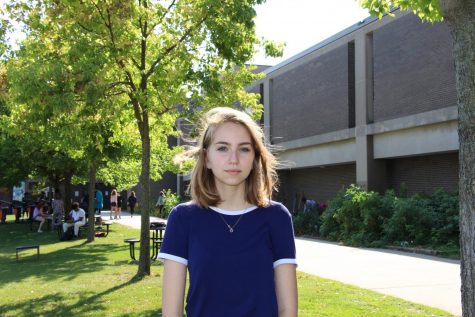
Katherine Lundquist is the Editor in Chief of our student run newspaper, and has been on the team since freshman year. Lundquist is invested in nature,...

